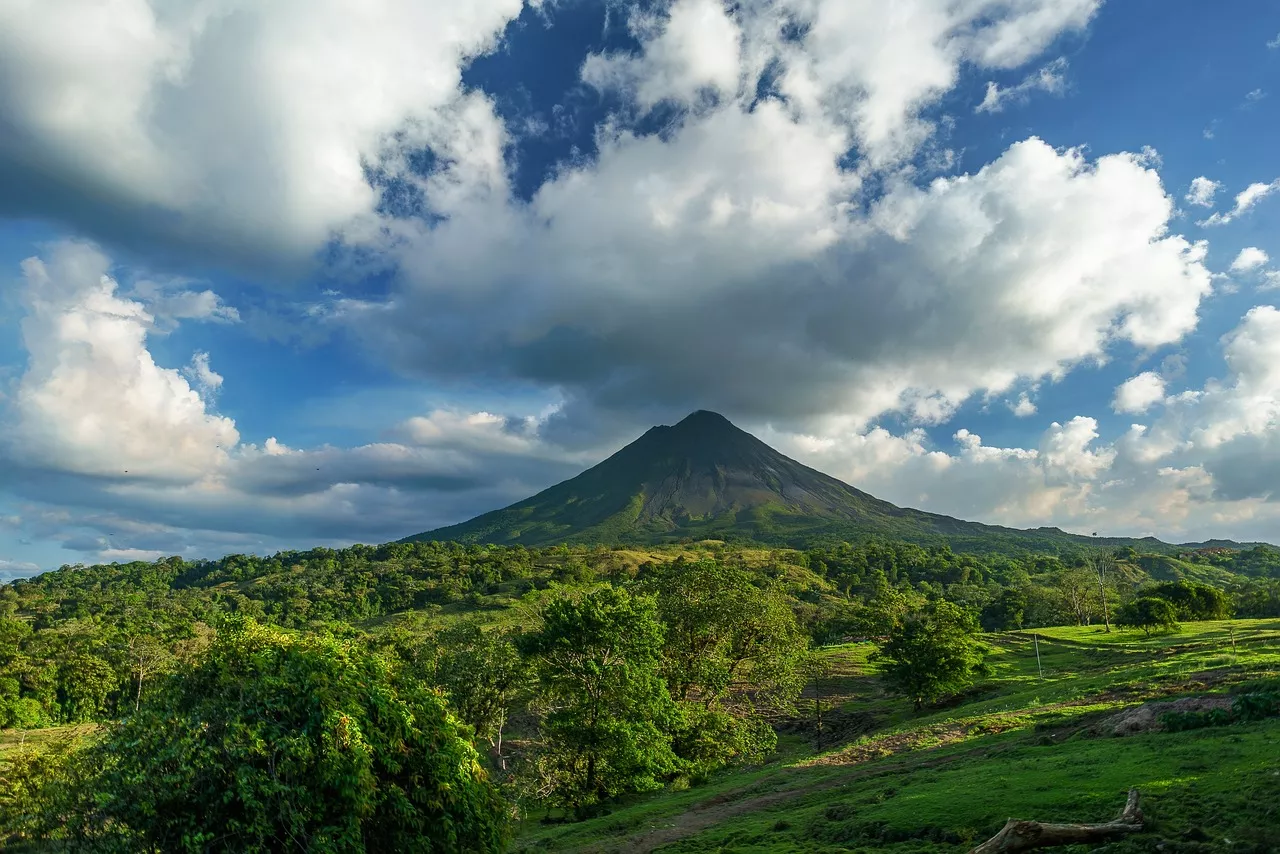The significance of Costa Rica Independence Day
Costa Rica Independence Day, also known as "Dia de la Independencia," is an important national holiday celebrated on September 15th every year. This significant date marks the country's independence from Spanish rule, which was declared in 1821. It is a day filled with joy, patriotism, and a deep sense of pride for the Costa Rican people.
The celebration of Costa Rica Independence Day goes beyond the usual parades and fireworks. It is a time when the nation comes together to honor their ancestors, reflect on their history, and appreciate the freedom they enjoy today. The festivities are a blend of cultural events, traditional music, dance performances, and, of course, the highlight of it all—the mouthwatering traditional cuisine that is synonymous with this special day.
Traditional Costa Rican cuisine
Costa Rican cuisine is a vibrant reflection of the country's rich cultural heritage. It is a fusion of indigenous ingredients, Spanish influence, and flavors that have been passed down through generations. The cuisine is characterized by its simplicity, freshness, and the use of locally sourced ingredients that are abundant in this tropical paradise.
One of the defining aspects of Costa Rican cuisine is the emphasis on using staple ingredients such as rice, beans, plantains, corn, and tropical fruits. These ingredients form the backbone of many traditional dishes and are prepared in a variety of ways to create a diverse and exciting culinary experience.
Popular dishes and their history
Costa Rican cuisine is a treasure trove of unique and flavorful dishes that have become staples in the country's culinary landscape. Each dish has a story to tell and a history that is deeply intertwined with the culture and traditions of Costa Rica.
One such dish is picadillo de chayote, which is a delightful mixture of chayote squash, onions, garlic, and a medley of spices. This dish has its roots in the indigenous communities of Costa Rica and has been passed down through generations. It is often served as a side dish and pairs well with other traditional favorites.
Tamales are another beloved dish that holds a special place in Costa Rican cuisine. These delicious parcels of masa, filled with a variety of ingredients such as chicken, pork, or vegetables, are wrapped in banana leaves and steamed to perfection. Tamales are typically enjoyed during festive occasions, and their preparation often involves the participation of the entire family, making it a cherished tradition.
Gallo pinto, a staple breakfast dish in Costa Rica, is a mouthwatering combination of rice and black beans, seasoned with onions, peppers, and cilantro. This dish has become a national symbol of Costa Rican cuisine and is often enjoyed with a side of fried eggs, plantains, and a hot cup of coffee.
Ingredients and flavors unique to Costa Rican cuisine
The vibrant and diverse ecosystem of Costa Rica provides an abundance of fresh and flavorful ingredients that are unique to the country. From the fertile volcanic soils to the crystal-clear waters of the Pacific and Caribbean coasts, Costa Rica is a paradise for food enthusiasts.
One of the standout ingredients in Costa Rican cuisine is the heart of palm, known locally as "palmito." This tender and delicately flavored vegetable is harvested from the inner core of certain palm trees and is a popular addition to salads, ceviche, and other savory dishes.
Another ingredient that adds a burst of flavor to Costa Rican cuisine is the annatto seed, also known as "achiote." This small, reddish-brown seed is used as a natural coloring agent and imparts a mild, earthy flavor to dishes such as arroz con pollo and tamal.
The country's tropical climate also allows for the cultivation of a wide variety of fruits, including mangoes, papayas, pineapples, and guavas. These fruits are not only enjoyed on their own but are also incorporated into desserts, smoothies, and refreshing beverages.
Traditional cooking methods and techniques
Traditional Costa Rican cooking methods and techniques have been passed down through generations, preserving the authenticity and flavors of the country's culinary heritage. These methods often involve slow cooking, grilling, and the use of traditional utensils and cookware.
One such technique is the use of a "comal," which is a flat griddle used for cooking tortillas, arepas, and other flatbreads. The comal is typically made of clay or cast iron and imparts a unique smoky flavor to the food.
Another traditional cooking method is the use of a "chicharronera," which is a deep-frying pot specifically designed for making chicharrones, or crispy pork cracklings. This method ensures that the chicharrones are cooked to perfection, with a crispy exterior and tender, flavorful meat.
In addition to these cooking methods, the use of fresh herbs and spices is integral to Costa Rican cuisine. Ingredients such as cilantro, culantro, oregano, and cumin are used to add depth and complexity to dishes, creating a harmonious blend of flavors.
Authentic Costa Rican recipes to try at home
If you're feeling inspired to recreate the flavors of Costa Rica in your own kitchen, here are a few authentic recipes to get you started:
1. Arroz con Pollo:
This classic Costa Rican dish is a flavorful combination of tender chicken, rice, vegetables, and spices. It is a one-pot wonder that is sure to impress your family and friends.
2. Ceviche:
This refreshing seafood dish is a staple in Costa Rican cuisine. It features fresh fish or shrimp marinated in lime juice, mixed with onions, peppers, and cilantro. Serve it with tortilla chips for a delightful appetizer.
3. Rompope:
This creamy, rum-infused eggnog is a popular drink during the holiday season in Costa Rica. It is made with milk, eggs, sugar, cinnamon, and, of course, a generous splash of rum. Sip on this delectable beverage and transport yourself to the warm shores of Costa Rica.
Culinary tours and experiences in Costa Rica
For an immersive culinary experience in Costa Rica, consider embarking on a culinary tour or participating in a cooking class. These experiences allow you to learn from local chefs, visit bustling markets, and taste your way through the diverse flavors of the country.
Culinary tours often take you to off-the-beaten-path destinations, where you can explore the local food scene and interact with farmers, artisans, and food producers. From coffee plantations to organic farms, these tours offer a unique insight into the ingredients and techniques that make Costa Rican cuisine so special.
If you prefer a more hands-on approach, cooking classes provide an opportunity to learn traditional recipes and cooking techniques from experienced chefs. You'll get to shop for fresh ingredients, prepare a delicious meal, and then savor the fruits of your labor.
Celebrating Costa Rica Independence Day with a culinary twist
As Costa Rica celebrates its Independence Day, what better way to honor this momentous occasion than by indulging in a culinary adventure that celebrates the country's rich heritage? Whether you're exploring the vibrant streets of San Jose or relaxing on the pristine beaches of Manuel Antonio, there are countless opportunities to savor the flavors of Costa Rica and immerse yourself in its captivating culture.
From street vendors selling mouthwatering empanadas to elegant restaurants serving up gourmet interpretations of traditional dishes, Costa Rica offers a culinary experience that is sure to delight even the most discerning food enthusiasts. So, grab your fork and knife, and get ready to embark on a gastronomic journey that will leave you with a profound appreciation for the flavors, history, and culture that make Costa Rica truly unique.
final thoughts
Costa Rica Independence Day is a time to celebrate the country's vibrant history, culture, and culinary heritage. Through its traditional dishes, unique ingredients, and rich flavors, Costa Rican cuisine offers a window into the heart and soul of this beautiful country.
As you savor the delicious delights of Costa Rican cuisine, take a moment to appreciate the stories behind each dish and the generations of people who have lovingly preserved these culinary traditions. Whether you're enjoying a plate of gallo pinto for breakfast or indulging in a decadent tres leches cake for dessert, know that you are experiencing a taste of Costa Rica's past, present, and future.
So, the next time you find yourself in Costa Rica or simply craving a culinary adventure, remember to seek out the authentic flavors and historic insights that make this country's cuisine truly unforgettable. ¡Buen provecho! (Enjoy your meal!)

 A Step-by-Step Guide to Making Irresistible Homestyle Potato Chips
A Step-by-Step Guide to Making Irresistible Homestyle Potato Chips



